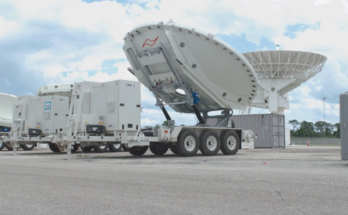by C. Zachary Hofer, Electronic Systems Analyst, Forecast International.
Production of the E-3 AWACS Block 40/45 aircraft, also known as the E-3G, will be delayed by another two years. The delay was announced in the U.S. Director, Operational Test and Evaluation report for FY16. The E-3G completed initial operational test and evaluation (IOT&E) in 2010.
The E-3G began its follow-on operational test and evaluation (FOT&E) in 4Q FY15, in accordance with the Test and Evaluation Master Plan as approved by the DOT&E. Cold weather operational testing began in 2Q FY16, and a cybersecurity Cooperative Vulnerability and Penetration Assessment began in 3Q FY16. The report says that the testing revealed “deficiencies related to multi-source track integration, maritime tracking, cybersecurity vulnerabilities, and software reliability.”
According to the report, the E-3G “has difficulty in combining various on- and off-board sensor data into a coherent single track on a consistent basis.” It adds that “the E-3G version 3.0 and supporting Block 40/45 ground systems are highly vulnerable to cyber threats and not survivable.” Adding to these problems is that the DOT&E could not collect E-3G mission computing start time and operating capability performance statistics because of aircraft mission cancellations. In a further setback, the Deployable Ground System was not available to be deployed to the cold weather operating base.
The E-3 Block 40/45 has also fallen short in basic operation. The DOT&E noted that “Block 40/45 tracking of sensed maritime objects, ships, and platforms is less effective than the predecessor Block 30/35 aircraft, although both systems demonstrated deficiencies compared to truth data supplied by the Coast Guard.” Meanwhile, the ground system is also having operational difficulties, with “insufficient cooling resulting in Deployable Ground System version 1.0 overheating and failure [becoming] a critical deficiency identified during the operational deployment to the Caribbean Sea.” However, the Deployable Ground System version 3.0 reportedly performed well during the Red Flag exercise, although it relied on room-modified, dedicated air conditioning ducts.
The Program Executive Office of the DOT&E ultimately concluded that the AWACS Block 40/45 is not ready for the FOT&E phase. The program has therefore been delayed approximately two years while program managers develop solutions to the issues noted above.
FI’s eight Electronic Systems Market Intelligence Services cover the full range of defense-related systems and programs in the radar, communications, electro-optical, and electronic warfare markets, presenting a comprehensive market outlook for current equipment as well as new systems being developed as the modern battlefield moves toward a technology-based warfare approach with network-centric capabilities.
For 50 years, Forecast International intelligence reports have been the aerospace and defense industry standard for accurate research, analysis, and projections. Our experienced analysts compile, evaluate, and present accurate data for decision makers. FI's market research reports offer concise analysis of individual programs and identify market opportunities. Each report includes a program overview, detailed statistics, recent developments and a competitive analysis, culminating in production forecasts spanning 10 or 15 years. Let our market intelligence reports be a key part of reducing uncertainties and mastering your specific market and its growth potential. Find out more at www.forecastinternational.com




